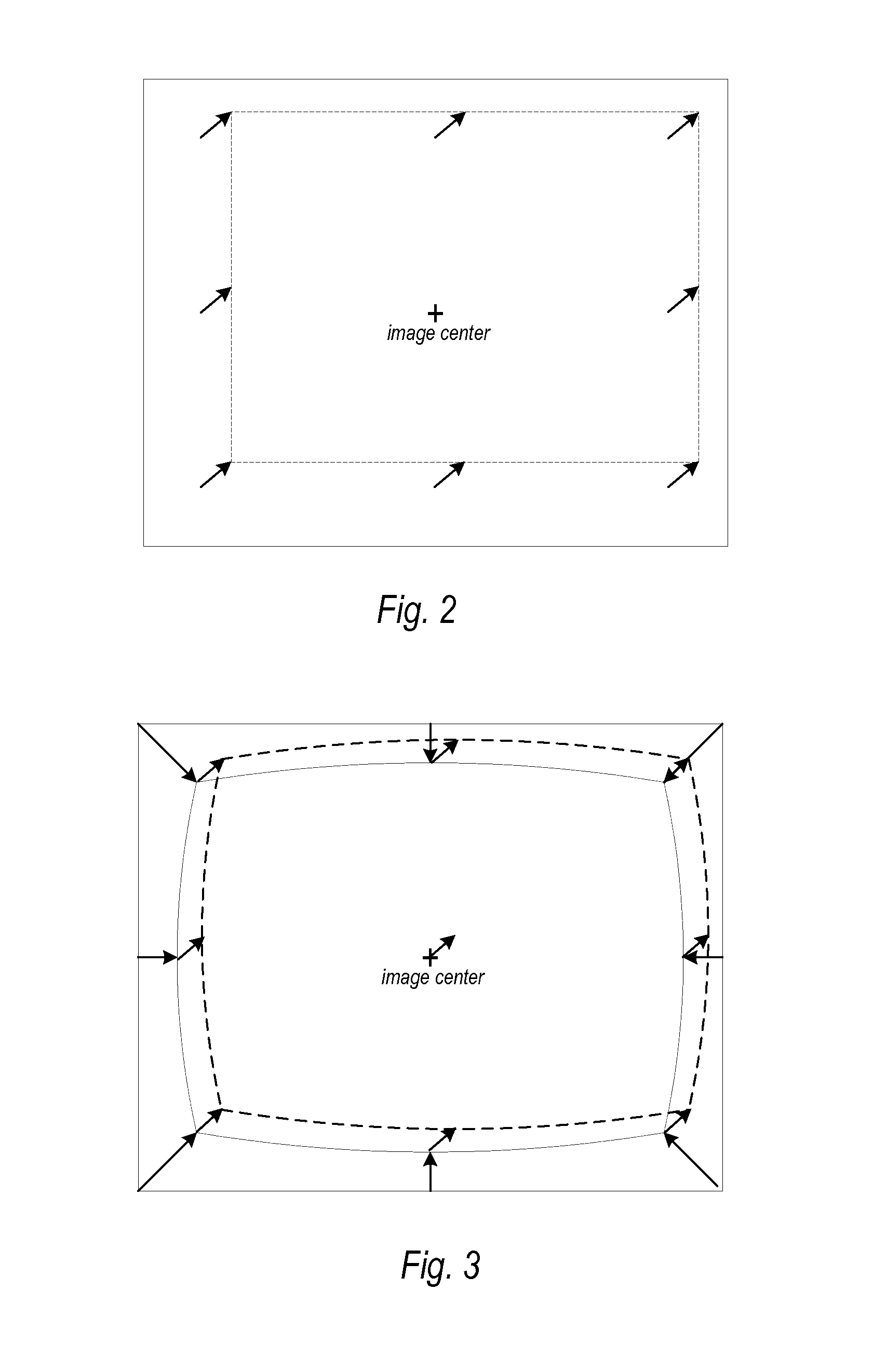Methods and apparatus for camera calibration based on multiview image geometry
- Summary
- Abstract
- Description
- Claims
- Application Information
AI Technical Summary
Benefits of technology
Problems solved by technology
Method used
Image
Examples
example camera
Model
[0106]The following describes an example camera model that may be used in some embodiments of the lens profiling module, and is not intended to be limiting. The example camera model characterizes the most common form of lens aberrations, namely the geometric distortion (both radial and tangential distortions), the lateral chromatic aberration and the radial light falloff from the principal point (the vignetting), for various lens types including, but not limited to, rectilinear, wide-angle, and fisheye lenses. Note that, in some embodiments, other types of aberrations may be characterized in the camera model.
[0107]The principal point may be defined as the location of an image on an image plane formed by the direct optical axial ray passing through the perspective center of the lens. In some embodiments, the principal point may be fixed at the image center. In other embodiments, the location of the principal point may be estimated during model estimation. Some emb...
PUM
 Login to View More
Login to View More Abstract
Description
Claims
Application Information
 Login to View More
Login to View More - R&D
- Intellectual Property
- Life Sciences
- Materials
- Tech Scout
- Unparalleled Data Quality
- Higher Quality Content
- 60% Fewer Hallucinations
Browse by: Latest US Patents, China's latest patents, Technical Efficacy Thesaurus, Application Domain, Technology Topic, Popular Technical Reports.
© 2025 PatSnap. All rights reserved.Legal|Privacy policy|Modern Slavery Act Transparency Statement|Sitemap|About US| Contact US: help@patsnap.com



